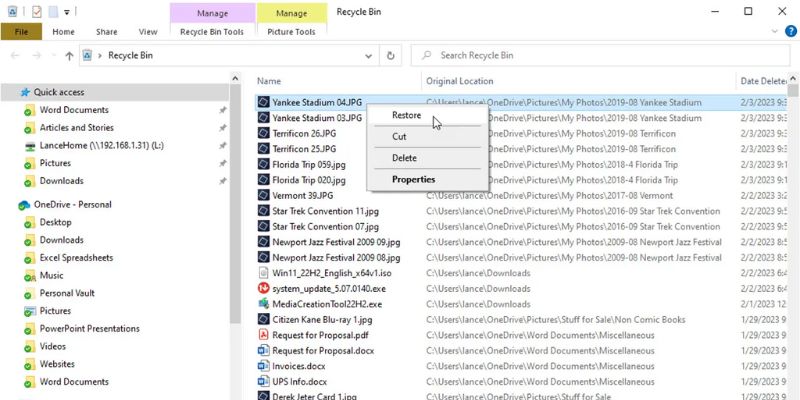Contents
- 1 Best Deleted Data Recovery Ways in Windows 10 or 11
- 2 1. Use the Recycle Bin – Best Deleted Data Recovery
- 3 2. Using Microsoft’s Windows File Recovery – Best Deleted Data Recovery
- 4 Third-party recovery utilities
- 5 3. Recuva – Best Deleted Data Recovery
- 6 4. Glarysoft File Recovery Free – Best Deleted Data Recovery
Best Deleted Data Recovery Ways in Windows 10 or 11
1. Use the Recycle Bin – Best Deleted Data Recovery
You’ve undoubtedly already recovered a file from the Recycle Bin. Simply said, Windows allots a small portion of your hard drive space to a secret system folder called the Recycle Bin. This guarantees that files marked as deleted are actually retained in a reserve. The file should be accessible to you for recovery, at least for a period of time, provided that you don’t permanently delete it or empty the Recycle Bin.

To access it, you click the Recycle Bin icon on your desktop. You may sort the files by name, location, date, and other factors, just like you can with any folder. Furthermore, you can look for a file by name. When you have located the file you want to restore, right-click it and choose Restore.
2. Using Microsoft’s Windows File Recovery – Best Deleted Data Recovery
For Windows 10 and 11, Microsoft offers a free command-line tool that tries to restore deleted files. The program, which goes by the name of Windows File Recovery, works with mechanical hard drives, SSDs, USB devices, and memory cards. In an effort to revive a file, it also provides regular and extended modes.
Visit Microsoft’s recovery page
Install the software by downloading it from the Microsoft Store. When its shortcut is launched, a command prompt with samples of its fundamental syntax appears. You should absolutely study the instructions on the Windows File Recovery support page provided by Microsoft before using it.
Type the appropriate command
The command must then be typed, followed by the recovery destination, recovery mode, and name or location of the deleted file or files.
A Note about Windows File Recovery
Third-party recovery utilities
I’ve employed a variety of outside rehabilitation techniques with varying degrees of success. Again, the extent to which you try to recover a deleted file immediately determines how effective they are. However, if the file is still essentially or completely intact, these programs will assist you in reviving it.



